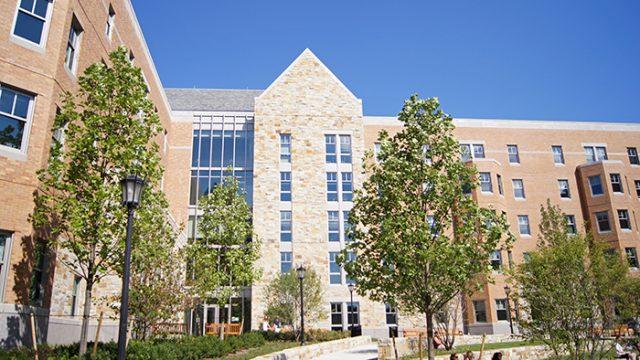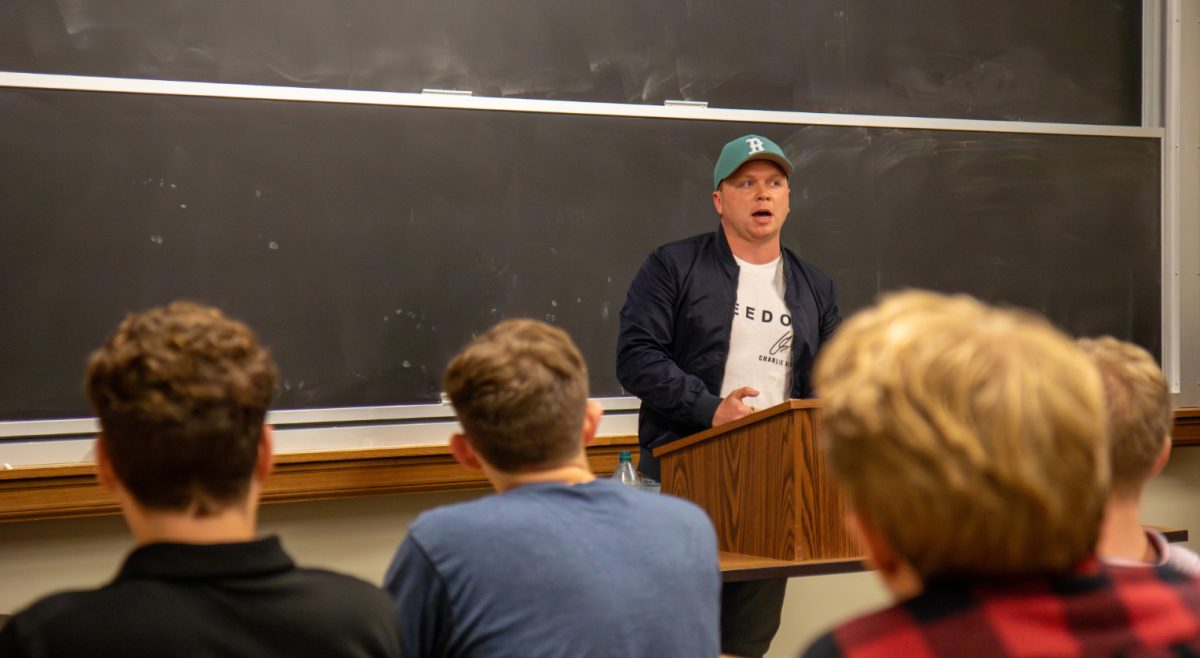“Sustainability is tied to stewardship” is the slogan of Boston College’s sustainability director, Bob Pion. With Pion directing sustainability efforts in the 2150 Commonwealth Ave. residence hall, Boston College sports not only maroon and gold, but also green.
Pion credits the success of the building’s swift construction to the collaboration of the design and construction teams to the BC Project Management team for managing the whole process. The team collaborated with the Office of Residential Life, Student Affairs and University Health Services on design work for their respective components in the building. BC’s intent is that future new buildings on campus will be constructed with a Leadership and Energy in Environmental Design (LEED) standard in mind.
The LEED Certification System includes a checklist with a point system that corresponds to different levels of efficiency in building design. A silver rating constitutes a point score ranging from 50-59, while a gold score falls within the range of 60-69 points. BC’s 2150 Comm. Ave. scored a 57, placing it within the range for a silver LEED rating—however, this result has yet to be finalized, because it takes several months to receive the result once the project has been submitted to the United States Green Building Council (USGBC).
Pushing for a silver, rather than a gold, rating seemed to be the most financially feasible goal, Pion said.
“There are times when you are not going to be able to get all of the points available within the LEED process,” Pion said. “The specific building type, location, and existing conditions influence availability of credits as well as making decisions on what is [in] the best interest for the university, the specific building, the building systems, and most importantly, its occupants.”
LEED can be broken down into five key areas: sustainable sites, water efficiency, energy and atmosphere, materials and resources, and indoor air quality.
“BC easily met some requirements in the site category because the building is located on Comm. Ave. and is close to the bus and T stations and near other community services,” Pion said.
Another criterion for LEED involves the overall environmental footprint of the building given the layout of the open space, a requirement met by the large green area in front of 2150 Comm. Ave. Bicycle racks have also been installed on the ceilings and walls of designated bike rooms for students to secure their bikes.
Another sustainable feature of the new building includes the implementation of a new gray water system that collects used water from sinks, filters and processes it through basement holding tanks, and recycles into toilet water. This method has led to a 35-percent reduction in water use.

Though the original plan for the building involved the use of dual flush toilets, Pion settled on striking a balance between idealistic expectations and practicality by eliminating that idea, but implementing low-flow shower heads and toilets.
In order to acquire the most sustainably manufactured furniture, BC hired DCI Furniture, a local architectural firm that has been connected to the University for many years. Capitalizing on BC’s mission for sustainability, DCI only uses locally harvested wood to make their furniture.
Riding on the sustainability success of 2150, Pion already has his eyes set for the future.
“We’d like to collaborate with [Einhorn Yaffee Prescott (EYP) Architecture & Engineering] on the building’s green features to remind people of BC’s commitment to sustainable design and construction,” Pion said. “Part of my job is to figure out ways to communicate these [sustainability aspects] to the community.”
What’s next for Pion? He’ll be working to make the new recreation center, which will be constructed on the former site of Edmond’s Hall, qualify for a LEED silver standard.
Featured Image by Julia Hopkins / Heights Editor













